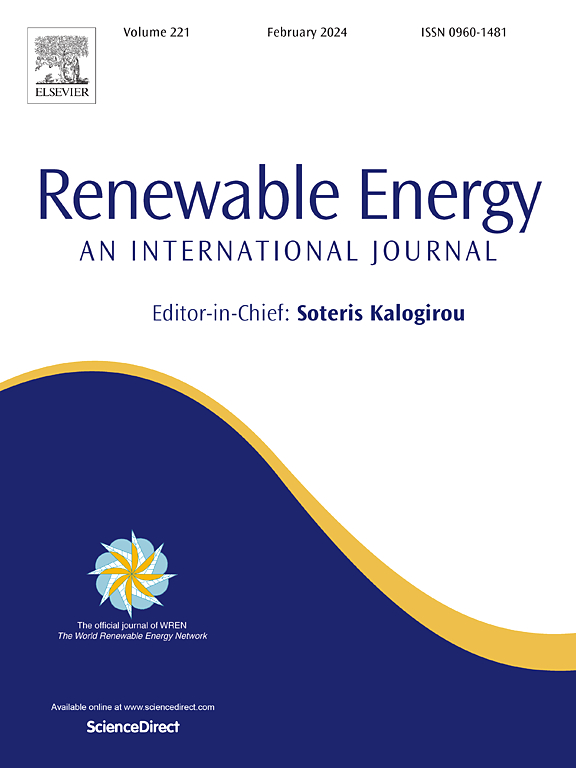Fast optimal control performance evaluation for wave energy control co-design
IF 9
1区 工程技术
Q1 ENERGY & FUELS
引用次数: 0
Abstract
With the application of energy-maximizing control for wave energy converters (WECs), the WEC design problem becomes a control co-design problem. One of the fundamental requirements of co-design is to evaluate the optimal control performance, i.e., average power generation. Previous control techniques include model predictive control (MPC) and pseudo-spectral (PS) control, but both require iterative optimization, with computational requirements the main limiting factor in co-design. In this study, a fast optimal control performance evaluation method is proposed based on a ‘wave-by-wave’ (WbW) representation. The idea is to split the wave excitation force (WEF) signals into individual waves, process them separately, and then combine the results with the distribution of WEF amplitude and period, yielding a straightforward average power calculation. The method is fully developed and studied, considering the cases of position-only, and general, constraints, as well as different choices to obtain the WEF parameter distribution. It is shown that the WbW method can achieve a very high control evaluation fidelity (within a 5% error) and give almost the same co-design result as MPC and PS (implemented using WecOptTool), but with a significantly reduced computation time (e.g., hundreds of times faster), therefore being a game changer for control co-design of WECs.
波浪能控协同设计的快速最优控制性能评价
随着能量最大化控制在波浪能变换器中的应用,波浪能变换器的设计问题成为控制协同设计问题。协同设计的基本要求之一是评估最优控制性能,即平均发电量。先前的控制技术包括模型预测控制(MPC)和伪谱控制(PS),但两者都需要迭代优化,计算需求是协同设计的主要限制因素。本文提出了一种基于“逐波”(wave-by-wave, WbW)表示的快速最优控制性能评价方法。其思想是将波激力(WEF)信号分解成单个波,分别处理,然后将结果与WEF振幅和周期的分布结合起来,得出一个简单的平均功率计算。对该方法进行了充分的开发和研究,考虑了位置约束和一般约束情况,以及不同的选择来获得WEF参数分布。结果表明,WbW方法可以实现非常高的控制评估保真度(误差在5%以内),并给出与MPC和PS(使用WecOptTool实现)几乎相同的协同设计结果,但计算时间显着减少(例如,速度提高了数百倍),因此成为WECs控制协同设计的游戏规则改变者。
本文章由计算机程序翻译,如有差异,请以英文原文为准。
求助全文
约1分钟内获得全文
求助全文
来源期刊

Renewable Energy
工程技术-能源与燃料
CiteScore
18.40
自引率
9.20%
发文量
1955
审稿时长
6.6 months
期刊介绍:
Renewable Energy journal is dedicated to advancing knowledge and disseminating insights on various topics and technologies within renewable energy systems and components. Our mission is to support researchers, engineers, economists, manufacturers, NGOs, associations, and societies in staying updated on new developments in their respective fields and applying alternative energy solutions to current practices.
As an international, multidisciplinary journal in renewable energy engineering and research, we strive to be a premier peer-reviewed platform and a trusted source of original research and reviews in the field of renewable energy. Join us in our endeavor to drive innovation and progress in sustainable energy solutions.
 求助内容:
求助内容: 应助结果提醒方式:
应助结果提醒方式:


